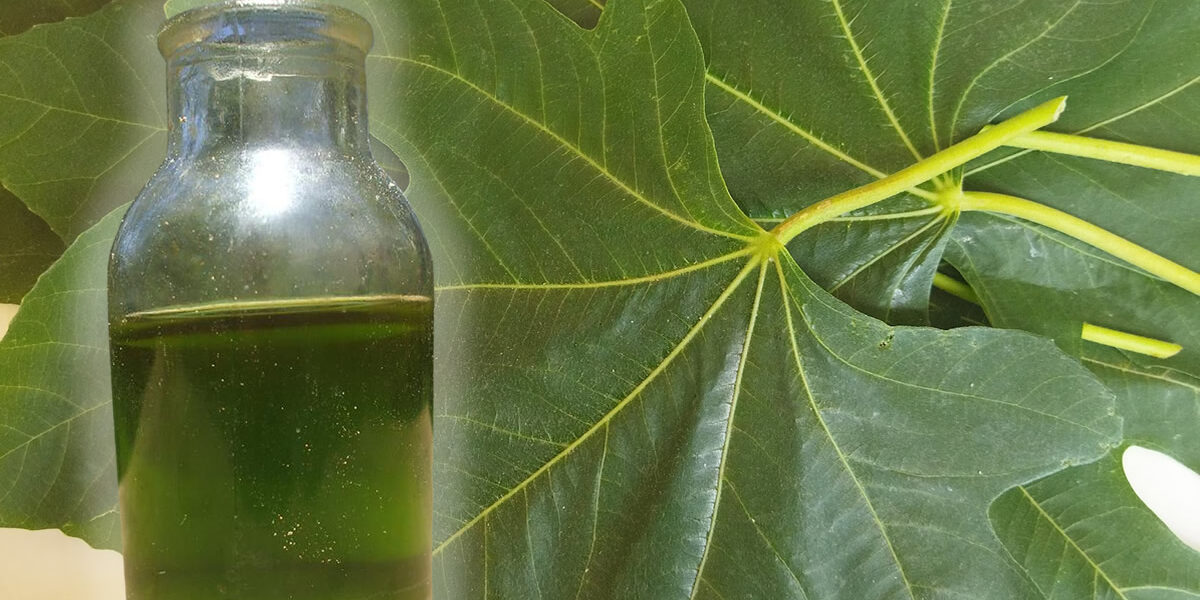Plants and trees offer a wide range of valuable resources for human health and well-being, and fig leaves are no exception.
Among the many beneficial properties of this plant, preparing fig leaf oil has proven to be a versatile and effective natural remedy for treating corns and warts, as well as offering multiple other skin and health benefits.
In this article, we will explore how to prepare fig leaf oil and analyze its many benefits.
How to prepare fig leaf oil
Preparing fig leaf oil is a relatively simple process that requires only a few ingredients. Here’s how you can do it:
Ingredients:
Fresh fig leaves (about 1 cup)
Carrier oil (olive oil, coconut oil, almond oil, etc.)
A dark glass jar
A fine sieve or gauze
Instructions:
Harvest fresh, clean fig leaves. Make sure they are free of pesticides or chemicals.
Wash them gently under running water to remove any remaining dirt.
Dry the leaves carefully using a clean towel.
Finely chop the fig leaves to increase the contact surface area with the oil.
Fill the dark glass jar with the chopped leaves.
Pour the carrier oil into the jar until the leaves are completely covered.
Seal the jar and place it in a cool, dark place for about 2 to 3 weeks. Shake the jar daily to help extract the active ingredients.
After the infusion period, strain the oil using a fine sieve or gauze to separate the leaves from the oil.
Transfer the fig leaf oil to a dark glass bottle and store it in a cool, dark place.
Benefits of fig leaf oil:
Fig leaf oil is known for its healing properties and benefits to the skin. Some of its main benefits include:
Treatment of corns and warts: Fig leaf oil has traditionally been used to reduce the appearance of corns and warts. Because of its softening and moisturizing properties, it can help soften the thickened skin of corns and warts, making them easier to remove.
Antioxidant properties: Fig leaves contain antioxidant compounds that help fight oxidative stress and protect the skin from free radical damage.
Skin hydration: Fig leaf oil is rich in nutrients that can help moisturize and soften the skin, improving its texture and radiance.
Soothing for skin irritations: Due to its soothing properties, the oil can be applied to minor skin irritations, such as redness or mild itching, to reduce discomfort.
Anti-inflammatory: Fig leaf oil contains compounds with potential anti-inflammatory properties, which can help calm inflamed or irritated skin.
How to apply fig leaf oil
To use fig leaf oil for corns and warts, follow these steps:
Cleaning: Thoroughly clean the affected area.
Application: Apply a small amount of fig leaf oil to the affected area.
Massage: Gently massage the oil into the skin, focusing on the callus or wart.
Absorption: Allow the oil to be absorbed into the skin. You can cover the area with a bandage or patch.
Repeat: Repeat the application twice a day until you notice improvement.
In conclusion, fig leaf oil is an interesting natural remedy to consider for treating corns and warts, as well as offering numerous other skin health benefits.
Remember to apply a very small amount to the skin first to check for any allergic reactions or other irritation.
However, it is important to remember that results may vary from person to person, and in the case of persistent or severe skin problems, it is always advisable to consult a medical professional before using any natural remedy.
